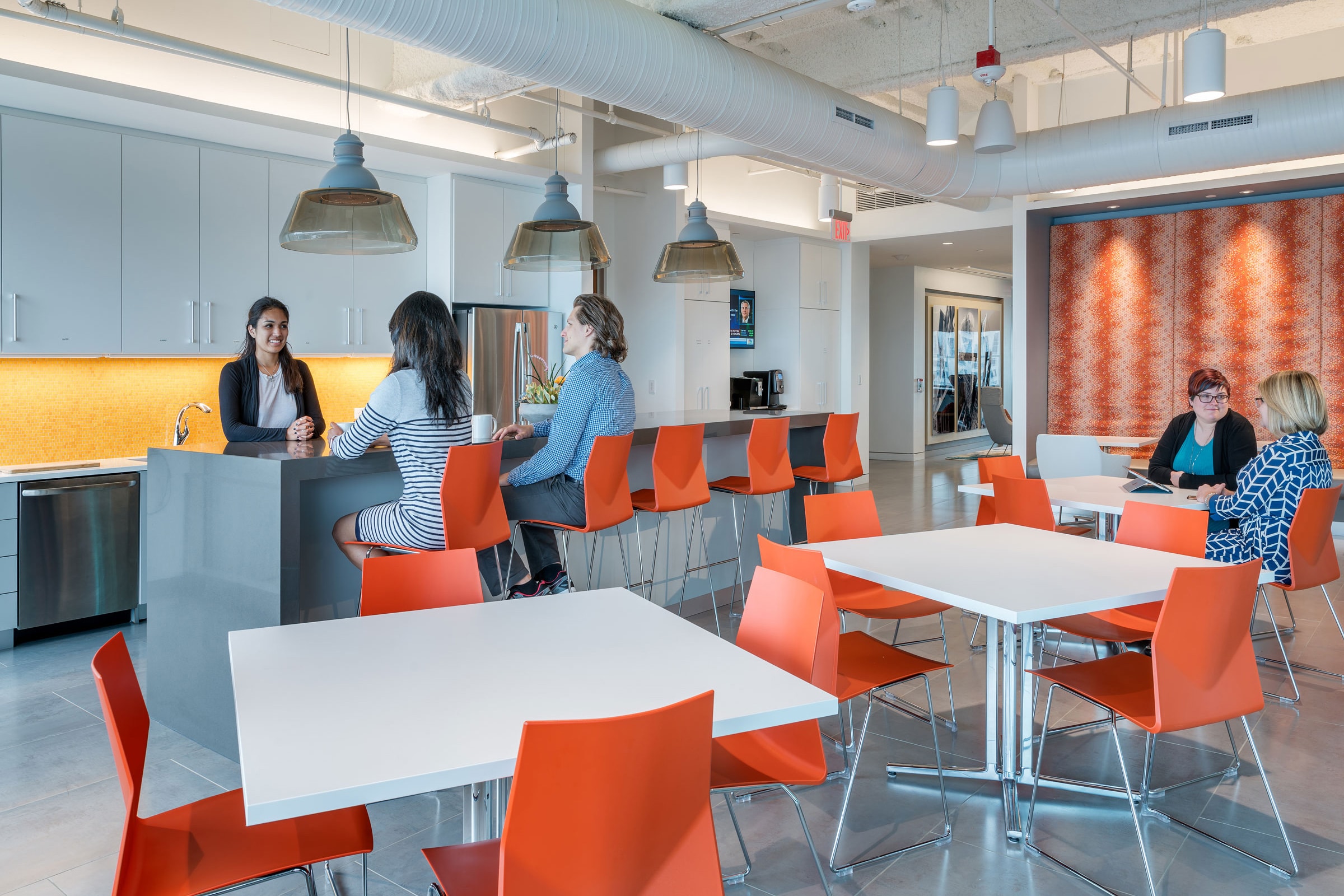Story at a glance:
- The pandemic has highlighted areas of design that need to be strengthened in order to keep occupants safe and healthy.
- Touchless technology eliminates the need for high-touch surfaces, while anti-microbial materials can improve sanitation.
- Multi-functional furniture and increased access control measures can help create safer, productive environments.
There’s no question that the pandemic is reshaping every aspect of our lives—and the built environment is no exception. COVID-19 is forcing architects, engineers, and manufacturers alike to rethink simple everyday decisions and forge a new way forward into the world of pandemic design.
So what is pandemic design? It’s an approach that meets the real, current design needs brought on by the COVID-19 pandemic, as well as looking ahead to address future needs and areas of weaknesses highlighted by the pandemic.
As Brian Whitmore, CEO and president of Studio W Architects, told us, approaching a project with preparedness in mind will lead to its success. “Being as prepared as possible for disasters or tragedy applies to so many areas—fire, earthquakes, natural disasters, COVID,” he says. “It’s important to create a plan that provides a lot of flexibility.”
Here are four pandemic design ideas to incorporate for a safe and healthy building.
Touchless Technology
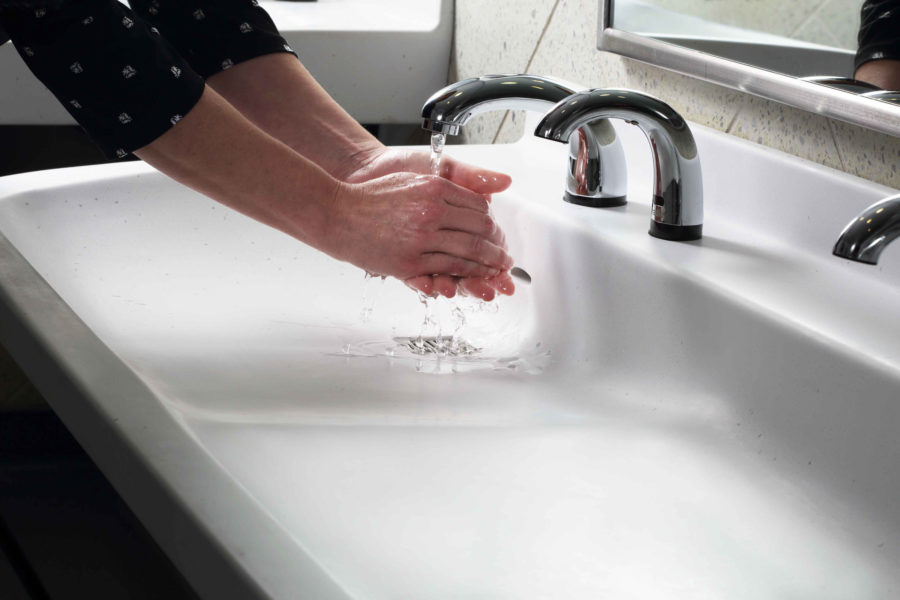
Bradley’s Express Lavatory Systems like the new Express GLX Series and Express TLX Series has a Terreon Solid Surface for superior durability. Pictured here is Bradley’s Express-ELX Series. Courtesy of Bradley Corp.
From gesture detection to facial recognition, there are a lot of touchless technology products out there—COVID has highlighted just how important they will become in post-pandemic design.
Thinking of offices and other commercial spaces, what could designing with touchless technology look like?
“In a touchless office, the door can be automated using sensors at the entrance or near-field communication between a door access point and a user’s phone,” says Robert Hemmerdinger, the chief sales and marketing officer for Delta Controls. “People won’t need to touch the door handle to gain access to the space. Once they’ve entered, lighting can be adjusted automatically, and temperature preferences can be input with the user’s phone.”
In other public places with high-touch surfaces, such as bathrooms, motion detection may be the answer to healthier, clean spaces.
Takes Excel Dryer’s hands-under, sensor-activated hand dryers, for instance. The touchless design eliminates a common, highly touched surface, making the space more hygienic to occupants.
Anti-Microbial Materials
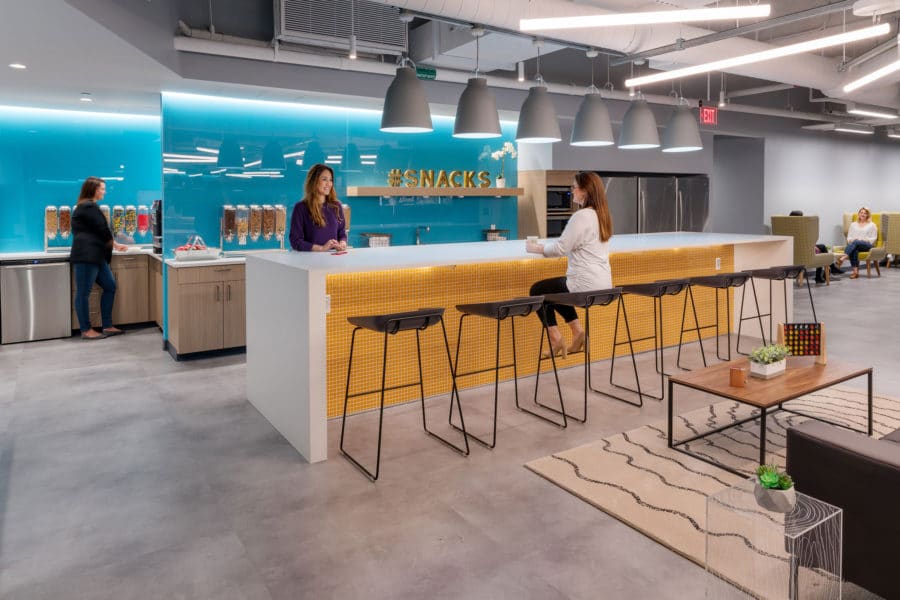
ServiceNow’s quartz countertops help reduce bacteria growth within its employee hub. Photo courtesy of Margulies Perruzzi
Not all surfaces can be touchless, though, and that’s where anti-microbial design comes in.
“With the increased need for sanitization … there is a greater importance placed on the anti-microbial design and materials with properties able to hold up to strong detergents and chemicals,” says Marc Valois, executive vice president and principal of Transwall.
Materials such as copper metals, silver metals, and Xorel all have anti-microbial properties, but does that mean they are the only materials you should use? No, says Dianne Dunnell, director of interior design at Margulies Perruzzi.
“At the end of the day, we are looking to implement best cleaning practices and interior products to reduce the spread of infection,” she says. “A good cleaning regime that removes the microbes is the most effective way to ensure hygiene criteria are met, even in critical hygiene areas.”
Increased Access Control
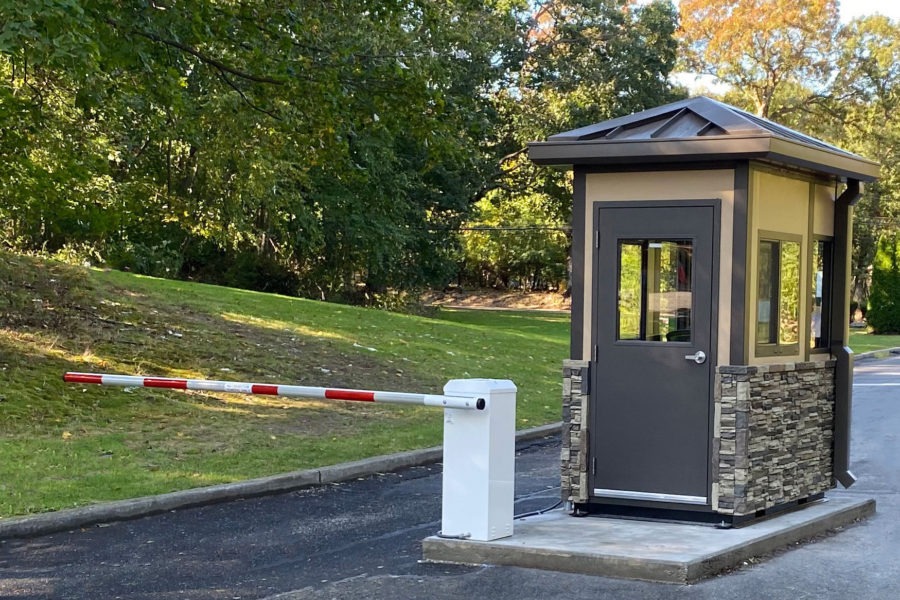
An example of a traditional Panel Built guard booth, designed for workplace access control. Photo by David Grajko
Access control means determining who has access to a building, or even a set of information, at any given time. But in the era of COVID, workplace access control measures “have extended to ensuring no potential COVID-positive employees or visitors, who would be otherwise harmless, are granted entry,” says Nathaniel Otto from Panel Built.
Although there are many types of access control, guard shacks, temperature screening booths, or gating systems like AutoGate’s vertical pivot gate outside of a building can keep those inside safe from people exposed or already sick.
Furniture with a Focus on Safety and Space
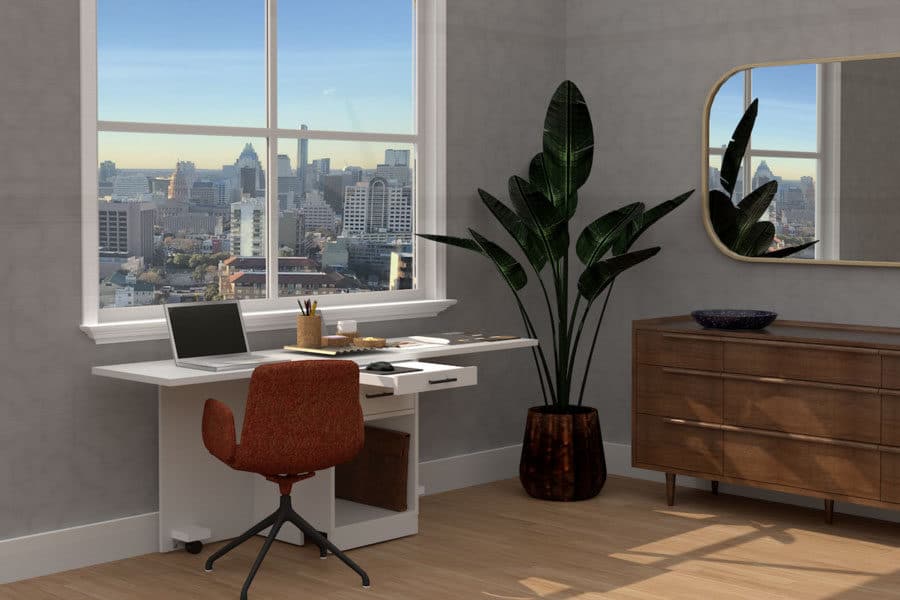
WorkCube can be a desk and then fold up when not in use. Image courtesy of Inova
Be it at home, the office, or your new home office, the pandemic is not only changing how the spaces around us are built but also their interiors.
Those working from home in small spaces know this all too well. Homes that were once spaces to entertain, unwind, and sleep now have the added task of accommodating work schedules. That’s where multi-functional furniture comes in.
“Multi-functional furniture creates space by opening up square footage that otherwise wouldn’t be there,” says Janine Masiewicz from furniture company Inova. Take the WorkCube, for example. This hybrid desk folds up when not in use, saving space.
For facilities that have resumed in-office work, glass partitions like Transwall’s LUCID system can keep employees feeling safe. Because the panels are glass, not only are they sustainable but also keep the office feeling open and vibrant rather than closed off.

